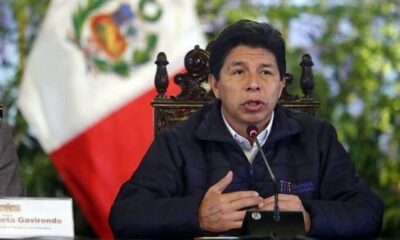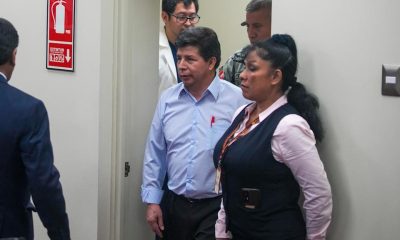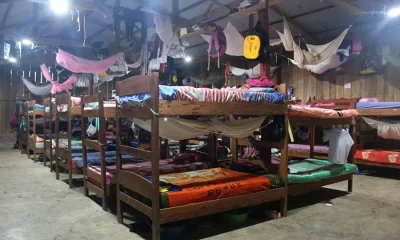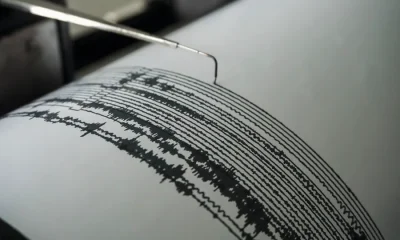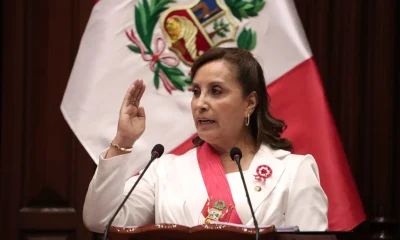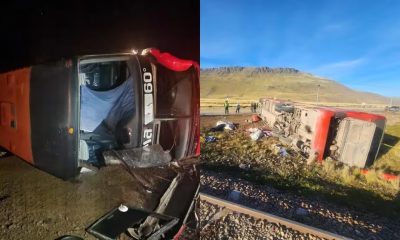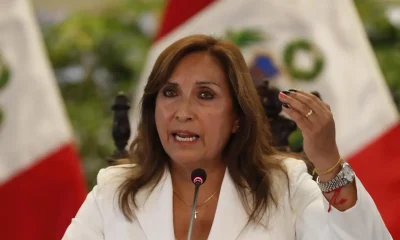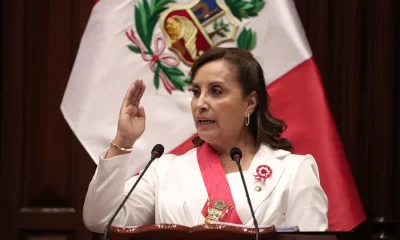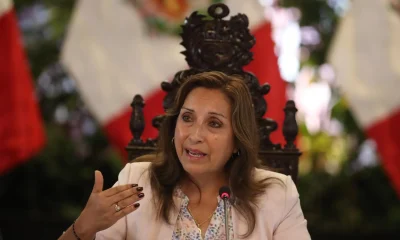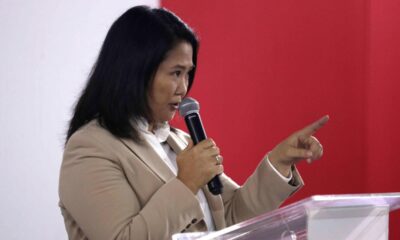International
As Peru unrest ebbs, stranded tourists make way to safety
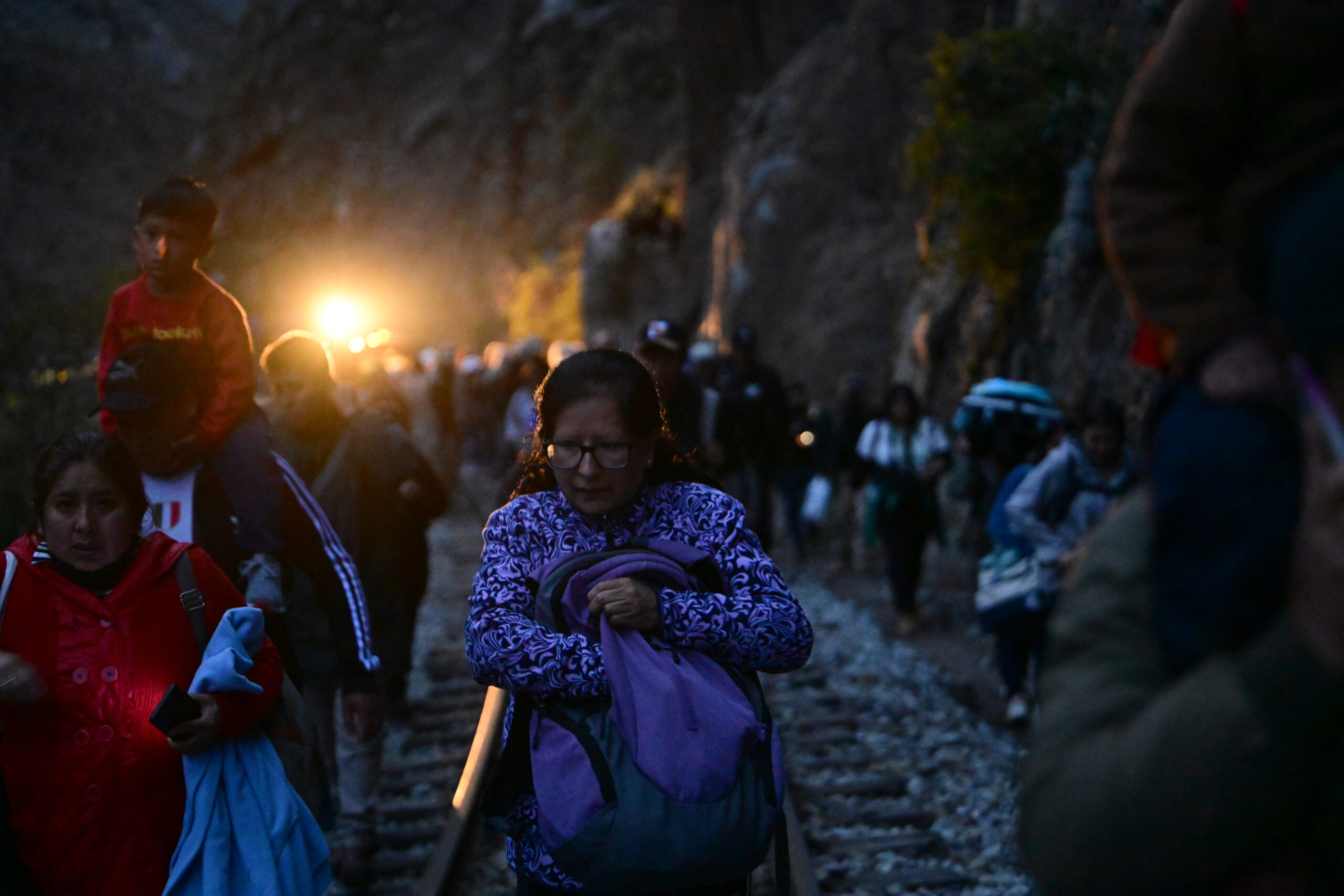
| By AFP | Carlos Mandujano and Moisés Ávila |
Protests dwindled in intensity in Peru on Saturday and thousands of tourists trapped in the interior boarded planes to escape unrest as President Dina Boluarte again vowed that she would not step down.
Some 4,500 tourists, many of them European and North American, rushed to the international airport in Cusco to catch flights after being stranded much of the week by simmering political unrest.
“By Sunday at the latest, all the stranded tourists will leave,” Tourism and Commerce Minister Luis Fernando Helguero told the Andina state news agency.
The state human rights ombudsman reported 70 roadblocks around the South American nation, and the toll from the unrest rose to 19 dead and 569 injured.
But the minister of defense and the head of the armed forces both said protests were diminishing in intensity.
“We have gradually been recovering normality along the roads, at the airports, in the cities. Normality is returning but it is not yet achieved,” said General Manuel Gomez de la Torre, head of the military joint chiefs of staff.
Defense Minister Alberto Otarola cautioned that “organized violent acts” were aimed at damaging airports, highways, natural gas pipelines and hydroelectric installations.
“The trend is downward. But we remain on alert. The situation of violence hasn’t passed and the crisis goes on,” Otarola said.
‘What is solved by my resignation?’
Boluarte, the lawyer who assumed the reins of the country December 7 after leftist President Pedro Castillo tried to dissolve Congress and rule by decree, only to be ousted and thrown in jail, again insisted that she would not bend to protesters and step down.
“What is solved by my resignation? We will be here, firmly, until Congress determines to bring forward the elections,” Boluarte told Peruvians.
On Friday, House speaker Jose Williams said the vote on the election schedule could be revisited during a forthcoming session of Congress.
In her televised address, Boluarte expressed regret for the protests that swelled across the country and the deaths, most of which came in clashes with security forces including the military, under a state of emergency.
If armed troops were on the streets, “it has been to take care of and protect” Peru’s citizens, Boluarte said, adding that the protests were “overflowing” with violent elements that were coordinated and not spontaneous.
“These groups did not emerge overnight. They had tactically organized to block roads,” she said.
Protesters are calling for the release of Castillo, the resignation of Boluarte and closure of Congress, and immediate general elections.
Initially detained for seven days, Castillo was on Thursday ordered to spend 18 months in pretrial detention.
The leftist former schoolteacher stands accused of rebellion and conspiracy, and could be jailed for up to 10 years if found guilty, according to public prosecutor Alcides Diaz.
Boluarte declared a 30-day nationwide state of emergency and said she wanted to bring forward elections as a way to calm the uproar, but Friday’s measure fell short of passage in Congress.
Tourists in limbo
Several airports have been closed, but the international terminal in Cusco, the gateway city to the jewel of Peruvian tourism, the Inca citadel of Machu Picchu, managed to reopen on Friday, allowing for some 4,500 stranded tourists to begin boarding outbound flights.
Cusco’s airport is the third largest in Peru, and armed soldiers were seen Saturday standing guard outside.
Protesters tried to storm the terminal on Monday, and the airport remained closed for nearly four days.
Good news also came Saturday to some 200 tourists stranded in a town in the deep valley below Machu Picchu. They were able to board a train and travel as far as Piscacucho, where a boulder blocked the railway.
The tourists, many from Europe and North America, then walked two kilometers (a little more than a mile) to where waiting vehicles took them on to Cusco, AFP learned.
Rail service to Machu Picchu had been suspended since Tuesday.
‘Criminal investigation’ needed
Some of the greatest bloodshed of the week occurred Thursday at the airport in Ayacucho, where soldiers protecting the terminal shot at protesters.
Soldiers “found themselves surrounded with the masses closing in,” rights ombudsman Eliana Revollar told AFP.
The army says its soldiers would have first raised their weapons and then fired into the air, but Revollar said shots were fired at protesters and an investigation is warranted.
International
Maduro, Delcy Rodríguez sued in Florida over alleged kidnapping, torture and terrorism

U.S. citizens have revived a lawsuit in Miami against Venezuelan President Nicolás Maduro following his capture, as well as against Vice President and now acting leader Delcy Rodríguez and other senior Chavista officials, whom they accuse of kidnapping, torture, and terrorism.
The plaintiffs — including U.S. citizens who were kidnapped in Venezuela and two minors — filed a motion over the weekend before the U.S. District Court for the Southern District of Florida asking the court to declare the defendants in default for failing to respond to the lawsuit initially filed on August 14, 2025, according to court documents made public on Monday.
The case, assigned to Judge Darrin P. Gayles, accuses the Venezuelan leaders of violating the U.S. Anti-Terrorism Act (ATA), the Florida Anti-Terrorism Act, and the Racketeer Influenced and Corrupt Organizations Act (RICO).
In addition to Maduro and Rodríguez, the lawsuit names Venezuelan Defense Minister Vladimir Padrino López; Attorney General Tarek William Saab; Interior Minister Diosdado Cabello; former Supreme Court Chief Justice Maikel Moreno; and National Assembly President Jorge Rodríguez.
The complaint also lists the state-owned oil company Petróleos de Venezuela (PDVSA) and former Electricity Minister Néstor Reverol as defendants.
According to the filing, Maduro “committed flagrant acts of terrorism against U.S. citizens,” citing the criminal case in New York in which Maduro and his wife, Cilia Flores, appeared in court for the first time on Monday following their arrest on Saturday.
The lawsuit claims that the plaintiffs “were held captive by Maduro” with “illegal material support” from the other defendants, whom it identifies as members of the Cartel of the Suns, a group designated by the United States as a terrorist organization last year.
International
U.S. faces worst flu season in decades as new strain spreads nationwide

The flu continues to take a heavy toll across the United States, with all but four states reporting high or very high levels of activity as a new viral strain known as subclade K continues to spread.
According to another key indicator — doctor visits for fever accompanied by cough or sore throat, common flu symptoms — the U.S. is experiencing its highest level of respiratory illness since at least the 1997–98 flu season, based on data released Monday by the Centers for Disease Control and Prevention (CDC).
“This is definitely a standout year,” said Dr. Caitlin Rivers, an epidemiologist and senior scholar at the Johns Hopkins Center for Health Security. “It’s the worst we’ve seen in at least 20 years. Most of the country is experiencing very high levels of activity, and we are still near the peak.”
Rivers noted that it is unusual to see such a severe flu season following another poor season the previous year, as intense seasons typically do not occur back to back.
Nationwide, approximately 8.2% of doctor visits during the final week of the year were for flu-like symptoms. At the same point last season — which was also severe — that figure stood at 6.7%.
In Massachusetts, where flu activity is reported as very high, health officials urged residents to get vaccinated.
“This is a moment for clarity, urgency, and action,” said Dr. Robbie Goldstein, Commissioner of Public Health, in a press release. “These viruses are serious, dangerous, and potentially deadly. We are seeing critically ill children, families grieving devastating losses, and hospitals under strain due to capacity.”
International
U.S. Energy Secretary to meet oil executives on reviving Venezuela’s crude industry
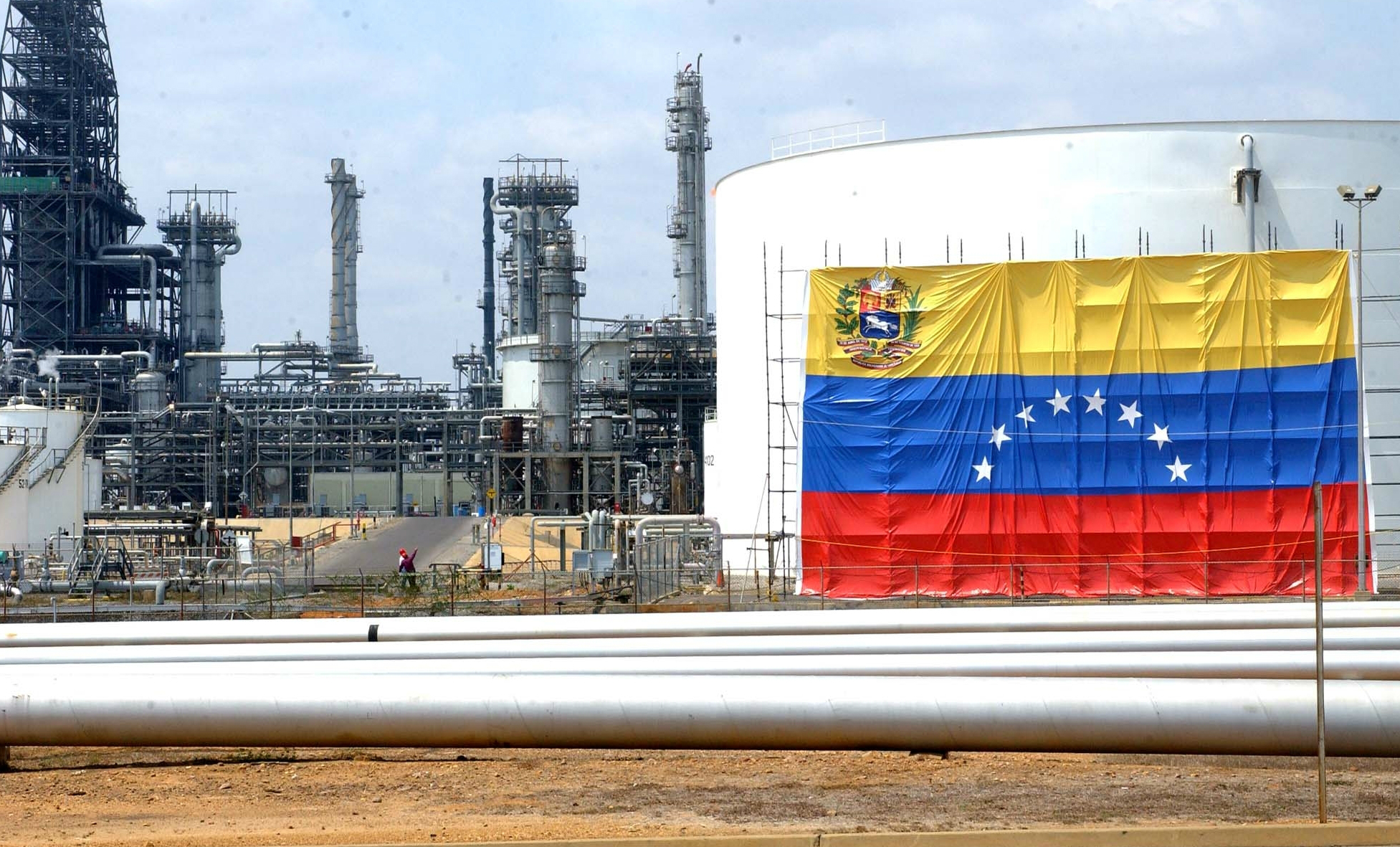
U.S. Secretary of Energy Chris Wright is set to meet this week with executives from the American oil industry to discuss how to revive Venezuela’s crude oil sector, according to multiple media reports.
The meeting will take place on the sidelines of an energy conference organized by investment banking group Goldman Sachs in Miami.
Senior executives from major U.S. oil companies, including Chevron and ConocoPhillips, are expected to attend the symposium.
Venezuela holds the world’s largest proven oil reserves, estimated at 300 to 303 billion barrels, representing roughly one-fifth of known global reserves.
Following the controversial operation carried out on Saturday to detain Venezuelan President Nicolás Maduro, U.S. President Donald Trump has placed renewed emphasis on control over and exploitation of Venezuela’s vast oil resources.
-

 International1 day ago
International1 day agoU.S. faces worst flu season in decades as new strain spreads nationwide
-

 International5 days ago
International5 days agoMissile attack hits Kharkiv homes, leaving 13 wounded
-
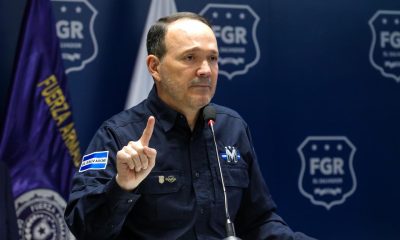
 Central America2 days ago
Central America2 days agoEl Salvador reports safest year in its history, security cabinet says
-
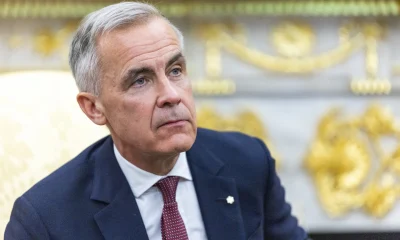
 International5 days ago
International5 days agoCanada’s prime minister Mark Carney to join Ukraine peace talks in Paris
-

 International4 days ago
International4 days agoTrump signals possible expansion of U.S. regional policy beyond Venezuela
-
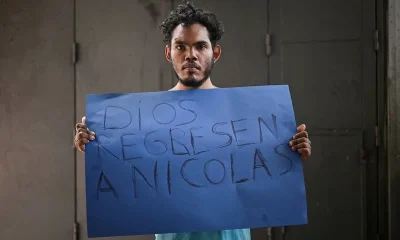
 International4 days ago
International4 days agoWorld leaders react to U.S. attacks on Venezuela, sparking global divide
-
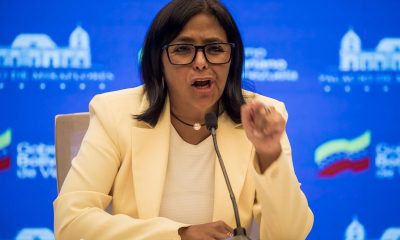
 International2 days ago
International2 days agoDelcy Rodríguez, key figure in U.S.-Venezuela transition, remains under EU sanctions
-
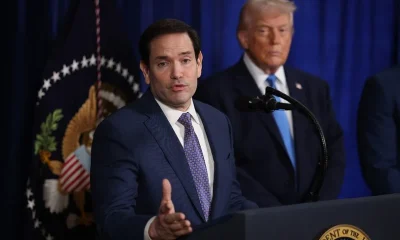
 International3 days ago
International3 days agoMarco Rubio warns Cuba could be Trump administration’s next target
-

 International1 day ago
International1 day agoMaduro, Delcy Rodríguez sued in Florida over alleged kidnapping, torture and terrorism
-

 International2 days ago
International2 days agoChina urges immediate release of Maduro, seeks emergency UN security council meeting
-
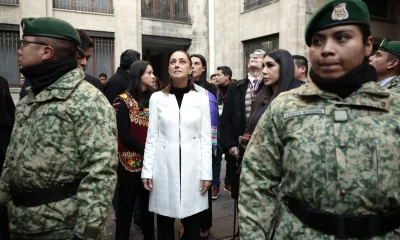
 International5 days ago
International5 days agoSheinbaum evacuates National Palace after 6.5-magnitude earthquake hits Southern Mexico
-
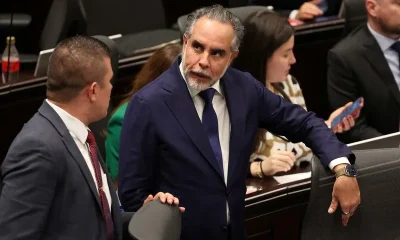
 International1 day ago
International1 day agoColombia to maintain anti-drug cooperation with U.S. after Trump remarks
-
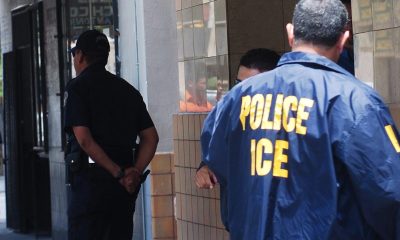
 International1 day ago
International1 day agoFlorida’s ‘Tidal Wave’ operation detains 10,400 migrants in largest ICE joint effort
-
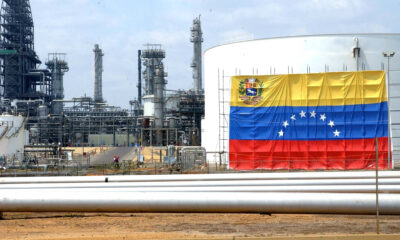
 International1 day ago
International1 day agoU.S. Energy Secretary to meet oil executives on reviving Venezuela’s crude industry
-
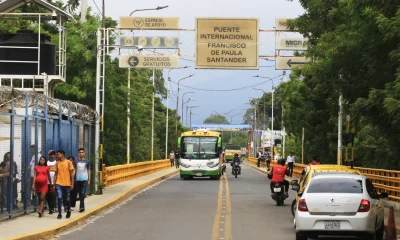
 International1 day ago
International1 day agoColombia says border with Venezuela remains calm after U.S. arrest of Maduro























